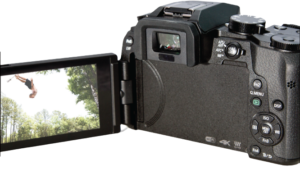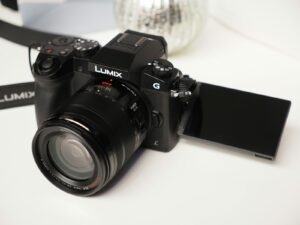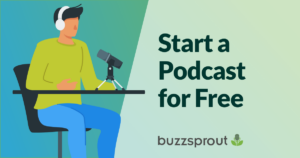Selecting the right camera for your needs can be a difficult task, with so many options available from well-known companies like Canon, Nikon, Panason
Selecting the right camera for your needs can be a difficult task, with so many options available from well-known companies like Canon, Nikon, Panasonic, and Sony. It is essential to consider the type of camera and its accompanying equipment to ensure that it meets your photography needs. In this case, Panasonic’s newly-released Lumix G7 is an appealing choice for those seeking a compact camera.
If you’re interested in learning more about the Panasonic Lumix G7, check out our in-depth review here!
About Panasonic Lumix G7
The Panasonic Lumix G7 is a mirrorless camera that was released in May 2015. It is the successor to the Lumix G6 and is part of Panasonic’s Micro Four Thirds system. Briefly, the G7 features a 16-megapixel sensor, 4K video recording capabilities, and a tilting touchscreen display.
The Lumix G7 was a significant release for Panasonic, as it marked the company’s foray into the 4K video market. In fact, it was also the first camera in the Lumix G series to feature their Depth from Defocus autofocus technology.

Since its release, the Lumix G7 has become a popular choice for podcasters due to its excellent video quality, versatility, and affordability. Second, its compact size makes it easy to transport, while its 4K capabilities allow for high-quality video recordings that can be edited and uploaded quickly. Additionally, the camera’s tilting touchscreen LCD allows podcasters to monitor their shots and adjust their framing as needed.
By all means, the Panasonic Lumix G7 has established itself as a valuable addition to the Lumix lineup, offering a range of advanced features at an affordable price point.
 Key Features
Key Features
- 16 MP Live MOS Sensor
- Venus Engine 9 Image Processor
- Micro Four Thirds System
- 2.36m-Dot OLED Viewfinder
- 3.0″ 1.04m-Dot Free-Angle Touchscreen
- 4K UHD Video Recording at 30/24 fps
- Built-In Wi-Fi Connectivity
- Up to 8 fps Shooting with AF & ISO 25600
- DFD AF System, 4K Photo Modes
- 14-42mm f/3.5-5.6 II MEGA O.I.S. Lens
Design & Build Quality

The Panasonic Lumix G7 is a mirrorless camera with an easy and intuitive way to capture high-quality images and videos. The camera features a sleek and modern design, with a compact and lightweight body that makes it easy to carry around.
One of the most notable features of the Lumix G7 is its dimensions. The camera measures 124 x 86 x 77 mm (4.88 x 3.39 x 3.03 inches) and weighs only 410 g (0.9 lb) with the battery and memory card installed. Thus, making it one of the smallest and lightest cameras in its class, making it ideal for photographers who need to travel light.
The Panasonic Lumix G7 is built to last in terms of build quality. Indeed, the camera features a durable magnesium alloy body designed to withstand daily use’s rigors. Secondly, the camera is weather-sealed, meaning it can be used in various weather conditions without worrying about damage.
Similar to its forerunner, the G7 presents a considerably ample grip that offers ample space for your fingers to clutch onto – notably surpassing the handhold provided by the majority of mirrorless cameras in its category. Plus, it offers manual control over the camera, allowing users to adjust various settings such as photo and video quality, aperture, shutter speed, ISO, white balance, exposure compensation, and autofocus area.
While certain functions like exposure mode, drive mode, and autofocus mode still need to be adjusted on the camera itself, the accompanying app enables users to control these settings remotely with their smartphones. Furthermore, the app allows users to reposition the autofocus area and trigger the shutter, as well as start and stop video recordings and adjust focus while filming by tapping on the phone screen.

In addition, located at the top right, there is a mode dial which includes the standard manual, semimanual, and automatic modes. It also features a special manual movie mode and a custom setting slot that can be programmed with three sets. Furthermore, a panorama mode is available as well.
Lastly, the camera also features a large and responsive LCD touchscreen that can adjust settings, navigate menus, and even focus on specific areas of the frame by simply tapping on the screen.
Video & Image Quality
The Panasonic Lumix G7 is a mirrorless camera that is known for its exceptional video quality. It has a 16-megapixel sensor that can shoot 4K video at up to 30 frames per second in any exposure mode.
The electronic shutter allows for shooting at up to 40 fps, providing even faster performance. This feature enables shooting silently at shutter speeds that go beyond the maximum 1/4000 offered by the mechanical shutter. It is particularly advantageous when capturing images with wide apertures under bright lighting conditions. The camera also features a 3.5mm microphone jack for improved audio recording, as well as a built-in stereo microphone.

The camera’s autofocus system is also praised for its accuracy and shutter speed, making it ideal for capturing fast-moving subjects, like street photography. Additionally, the Lumix G7 has a variety of shooting modes, including time-lapse and stop-motion animation.
The Panasonic Lumix G7 also delivers exceptional image quality in a variety of shooting scenarios. The camera’s advanced technology produces sharp, detailed photos with accurate colors even in challenging lighting conditions. Hence, minimizing image noise to create clear, high-quality pictures.
Incorporating continuous shooting, versatile burst shooting modes enable the combination of high shooting rates with autofocus. The G7 also offers a range of helpful exposure modes, including PASM, Creative Movie mode, and Intelligent Auto, enabling users to easily achieve their desired results. Additionally, the camera’s raw processing capabilities allow users to extract even more detail from their photos in post-production.
Regarding battery life, the Lumix G7 uses a rechargeable lithium-ion battery that can last up to 350 shots per charge. However, this can vary depending on the shooting mode, video quality, and the camera’s LCD screen usage.

Sound Quality
The Panasonic Lumix G7 features a built-in stereo microphone for capturing high-quality audio. The microphone is located on top of the camera and can be adjusted to three different levels of sensitivity: low, medium, and high. Due to this, users can capture audio in various environments, from quiet indoor to noisy outdoor environments.
However, some users have reported that the microphone can sometimes pick up unwanted background noise, especially in noisy environments. In any case, the Lumix G7 also has a microphone input jack that allows you to connect an external microphone for better sound quality. Evidently, it is also useful for video production, where high-quality audio is essential.
One limitation of the Panasonic Lumix G7 is that it does not have a headphone jack. Therefore, you cannot monitor the audio while recording, making it difficult to ensure you capture the best possible sound.
Specifications |
|
|
|
|
|
|
|
|
|

Final Verdict On Panasonic Lumix G7
| High-quality 4K video recording | Limited battery life |
| Fast autofocus system | No headphone jack for monitoring audio |
| Lightweight and compact design | Average low-light performance |
| Tilting touchscreen LCD display | Electronic viewfinder not as good as some competitors |
| Wi-Fi connectivity for easy sharing and remote control | Plastic construction may not feel as durable as metal-bodied cameras. |
| Good image stabilization | |
| Affordable price point for a mirrorless camera |
The Panasonic Lumix G7 is an excellent camera for podcasting, offering impressive photo and video quality, a wide range of features, and a lightweight design. Despite some individuals perceiving Panasonic cameras as complex due to their proprietary USB connectors, the G7 remains highly recommended for podcasters thanks to its performance and user-friendly interface. The pricier Lumix GX8 with a higher-resolution sensor and compatibility with Olympus lenses may make the G7 feel lacking, especially if you don’t plan on using anything other than the kit lens. The G7 still remains a highly recommended option for podcasters due to its impressive performance and user-friendly interface.

 Dimensions
Dimensions
COMMENTS